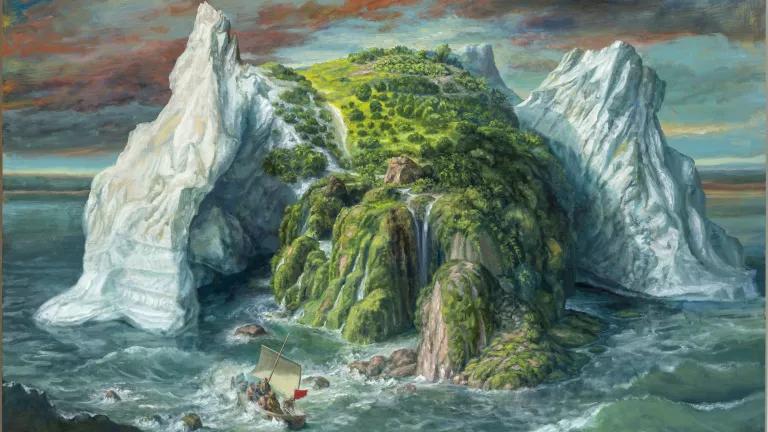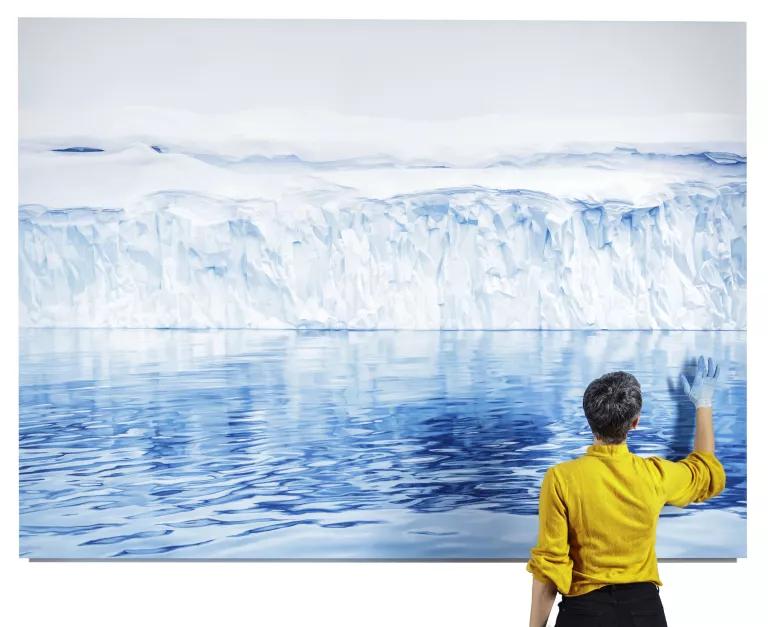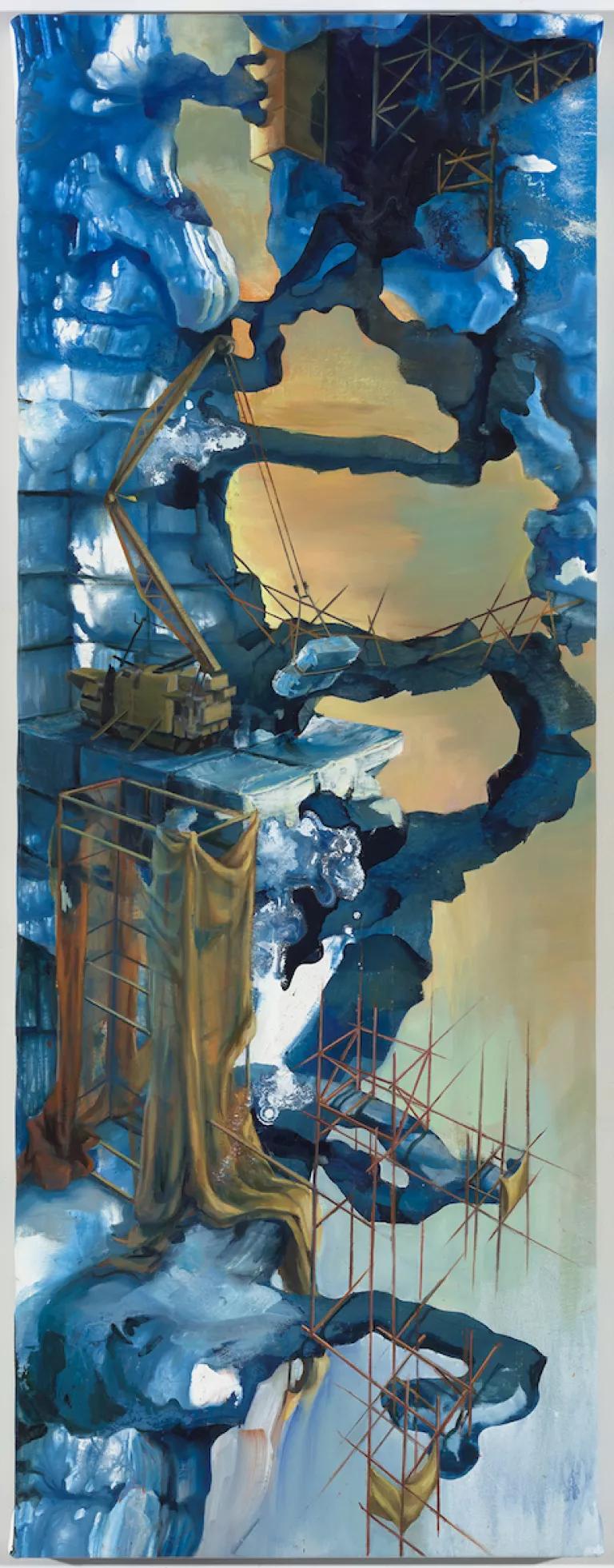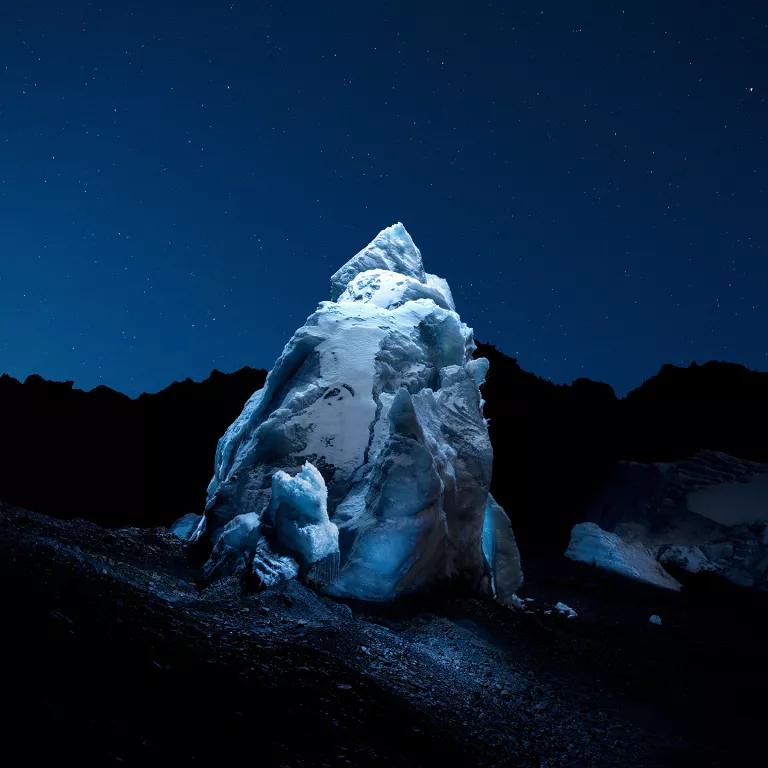Climate Art Sets Sail for the Poles
The polar expedition ship Endurance will take its long awaited maiden voyage this summer—with a permanent climate art exhibition on board.

Weather Change by Julie Heffernan
There’s a lot to consider when curating an art exhibit that showcases more than 50 artists working across diverse media including drawings, paintings, videos, sculptures, and soundscapes. Now imagine doing it on a ship bound for Antarctica, a vessel that may face 35-foot swells in notoriously unforgiving polar waters. (Pro tip: Work closely with the ship engineers, and forget about showing any freestanding pieces.)
Change is a first-of-its-kind polar art exhibition permanently housed aboard the National Geographic Endurance, a new polar expedition ship designed to ferry adventurous passengers to the Arctic and Antarctica. It is also Zaria Forman's curatorial debut. Her sole requirement for the pieces she commissioned for the show was that they be inspired by the frigid lands and seas at our planet’s northern and southern extremes. Much like Forman’s own work.

Zaria Forman working on Disco Bay, Greenland
The Brooklyn-based artist creates hyperrealistic pastel drawings of glaciers and sea ice that make the planet’s poles—and the effects of climate change that are rapidly ravaging them—feel urgently, chillingly present.
Forman’s fascination with far-flung locales began on childhood trips with her family that served as inspiration for her mother, photographer Rena Bass Forman. The younger Forman, too, takes pictures when she travels—thousands of them. Then, back in the studio, she draws her large-scale compositions from a combination of memory and photographs.
“Occasionally I will reshape the ice a little or simplify a busy background to create a balanced composition,” she says. “But 90 percent of the time I am depicting the exact scene that I witnessed, because I want to stay true to the landscape that existed at that point in time.”

Forman has had no shortage of opportunities to bear witness to the melting poles. In 2015 she traveled to Antarctica as the artist in residence aboard the National Geographic Explorer. She then tagged along on flights with NASA’s Operation IceBridge, a program that conducts yearly airborne surveys of polar ice. In 2016 and 2017, Forman logged 95 hours of flying time with the IceBridge crew over Antarctica, Greenland, and the Canadian Arctic, winging just 1,500 feet—five football fields—above the ice.
Working with NASA scientists shifted Forman’s perspective on both her subject matter and her approach to drawing it. “They have been flying over the exact same flight paths, the same time of year, for over a decade now, and they all spoke of how they could see the changes in the ice, especially sea ice,) with their naked eyes from one year to the next,” says Forman.“This experience informed and elevated my own practice of observing ice, and in turn, my drawing technique evolved toward heightened precision and nuance.”
Forman sees the “Change” exhibit as an opportunity beyond her own art to reach people, to encourage passengers to engage differently and more deeply with the region they see outside the ship’s windows and on their excursions.

LN 6910 from the “Terminus” series by Reuben Wu
Among the many works in the exhibit are paintings by Virginia Wagner that feature giant peaks of ice surrounded by rigs and scaffolding, being mined and chopped for human use. Then there’s the photography of Reuben Wu, who used a drone outfitted with LEDs to photograph a glacier under the night sky, the ice shining like a memory amid the darkness of forgetting. “Whale Bells,” by Andrew Bearnot and NRDC’s artist-in-residence Jenny Kendler, inspired by the humpback whale’s songs, is also on display, while a sculpture by John Grade imagines what it would feel like to be within sea ice floating on the water. Guests can stand inside it and even grab onto it in rough seas.
“It’s an exhibition with unexpected perspectives, exploring light, enchantment, geometry, turbulence, and tranquility,” says Forman. “For passengers aboard the Endurance, this creates a profound understanding of, and connection to, places at the forefront of climate change.”
The Endurance was originally set to launch in April 2020. After spending more than a year waiting out the pandemic in Norway, the ship finally sets sail to Iceland and Greenland on July 21, 2021.
This NRDC.org story is available for online republication by news media outlets or nonprofits under these conditions: The writer(s) must be credited with a byline; you must note prominently that the story was originally published by NRDC.org and link to the original; the story cannot be edited (beyond simple things such as grammar); you can’t resell the story in any form or grant republishing rights to other outlets; you can’t republish our material wholesale or automatically—you need to select stories individually; you can’t republish the photos or graphics on our site without specific permission; you should drop us a note to let us know when you’ve used one of our stories.

What Are the Solutions to Climate Change?
Climate Tipping Points Are Closer Than Once Thought
What Are the Effects of Climate Change?